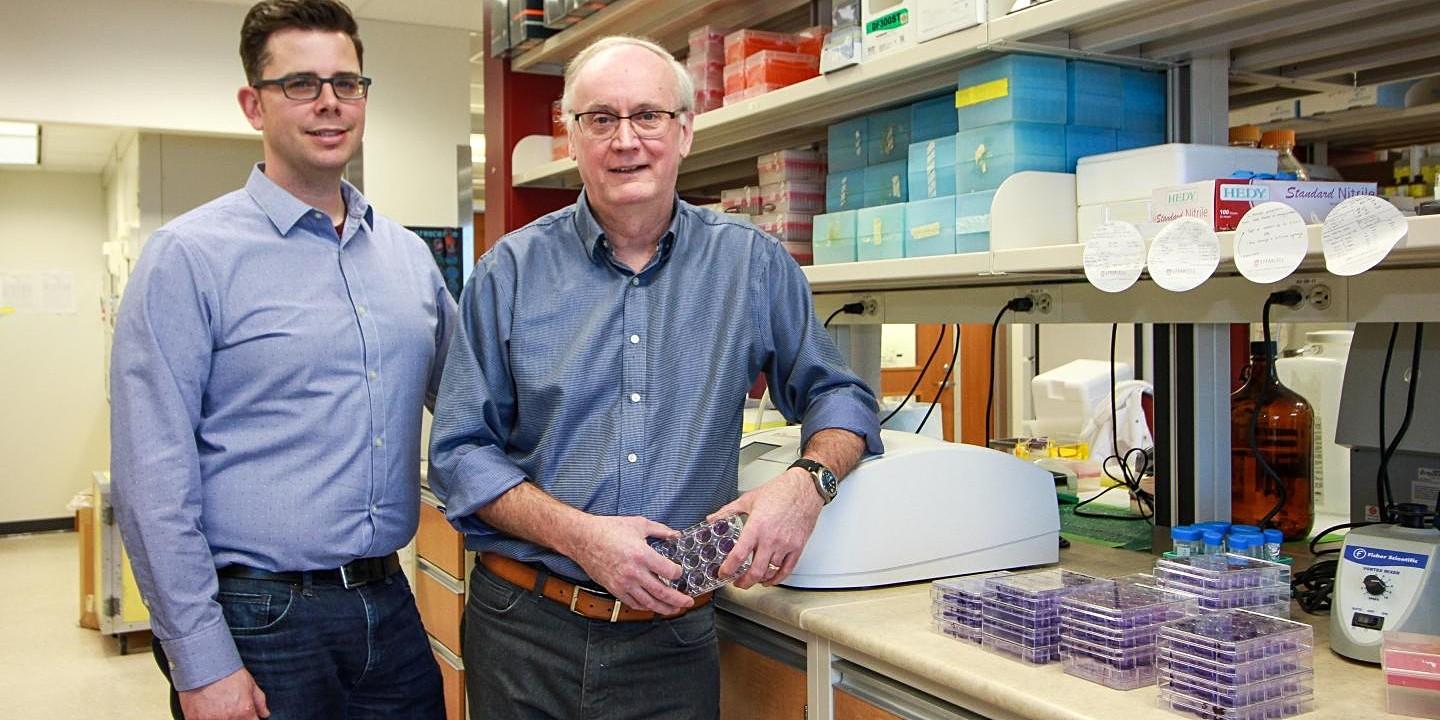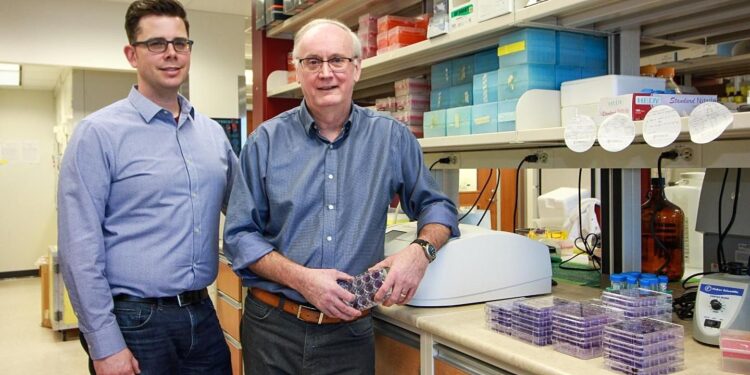Partnerships like this one can dramatically accelerate efforts to move research from lab to community, says virologist.

Credit: Melissa Fabrizio
University of Alberta researchers launched a joint effort with U.S.-based Tonix Pharmaceuticals to develop and test a vaccine against COVID-19.
The researchers hope their unique delivery method for the vaccine–synthetic vaccinia and horsepox viruses–will prove more effective than others being tested around the world.
“Poxviruses, such as vaccinia and horsepox, are a good vaccine platform for delivering the antigens that are needed to invoke an immune response against a virus like SARS-CoV-2,” said David Evans, a U of A virologist and professor of medical microbiology and immunology.
“These antigens are SARS-CoV-2 proteins that the poxvirus has been engineered to make and supply for processing by the immune system. The idea is that these recombinant proteins might give you a better antigenic response–and hopefully in the place where it’s most needed.”
More than 130 vaccines are being developed globally in response to the COVID-19 pandemic. The U of A team is proposing to insert genes copied from the SARS-CoV-2 virus genome into Tonix’s proprietory vaccinia and horsepox viruses, then test whether the viruses are expressing “spike” protein and other SARS-CoV-2 proteins.
The spike protein is the virus’s receptor, which it uses to attach itself to a cell and then enter it. The protein is critical for infection, and if it gets blocked by antibodies–which is one of the kinds of immune responses that can be raised against a pathogen–then the virus can’t bind to the cell and infect it.
“It’s known from studying these and other types of coronaviruses that the spike is a particularly important immune target and that certain antibodies to it will block infection,” said Evans, adding that the goal is to use the poxvirus delivery vector to make a form of the spike protein.
In a person who’s been vaccinated, an immune response to that protein would be established that would protect them from exposure to the SARS-CoV-2 virus.
“In order to get everyone safely back to work and school, most experts agree that we need a COVID-19 vaccine. To design a vaccine, you have to outsmart the virus,” said Seth Lederman, CEO of Tonix.
That’s what Evans and research associate Ryan Noyce are working hard to do. The two are leading the work at the U of A, hoping to have a recombinant virus made within a matter of weeks, which could then be pushed forward for further testing.
While the pair’s initial efforts are to develop a vaccine aimed at the spike protein, they have also begun work producing additional vaccines targeting other components of the virus.
Despite the urgent need, moving a candidate vaccine from the lab to the clinic is a daunting task, said Evans.
“People underestimate the difficulty of getting a vaccine from a laboratory into a human arm. It’s one of the hardest things there is to do in the health business. With the modern vaccine, the standard of safety that’s required and the standards of proof are very, very high. It’s a complicated, expensive, highly regulated process and it’s not something an academic laboratory is well equipped and financed to do.”
Through the partnership with Tonix, Evans believes the effort will advance far more quickly than could be accomplished alone. Once his team’s work to create a candidate vaccine is complete, it will then move to Tonix to pursue regulatory approval, testing in both animals and humans, and if all goes well, eventually manufacturing of the vaccine.
“Realistically what you need are partnerships with industry that has a history of working in drug and vaccine development to take a product to licence,” said Evans. “It’s essential. With the resources and experience that Tonix Pharmaceuticals bring to bear in product development and in the health sector, this work can move forward as quickly as conceivably possible.”
###
Evans’ work has been advanced by bridge funding from the Li Ka Shing Institute of Virology and with help from Defence Research and Development Canada. He also credits the Canadian Institutes of Health Research and the Natural Sciences and Engineering Research Council for their ongoing support of his work for more than 30 years.
Media Contact
Ross Neitz
[email protected]
Original Source
https:/





